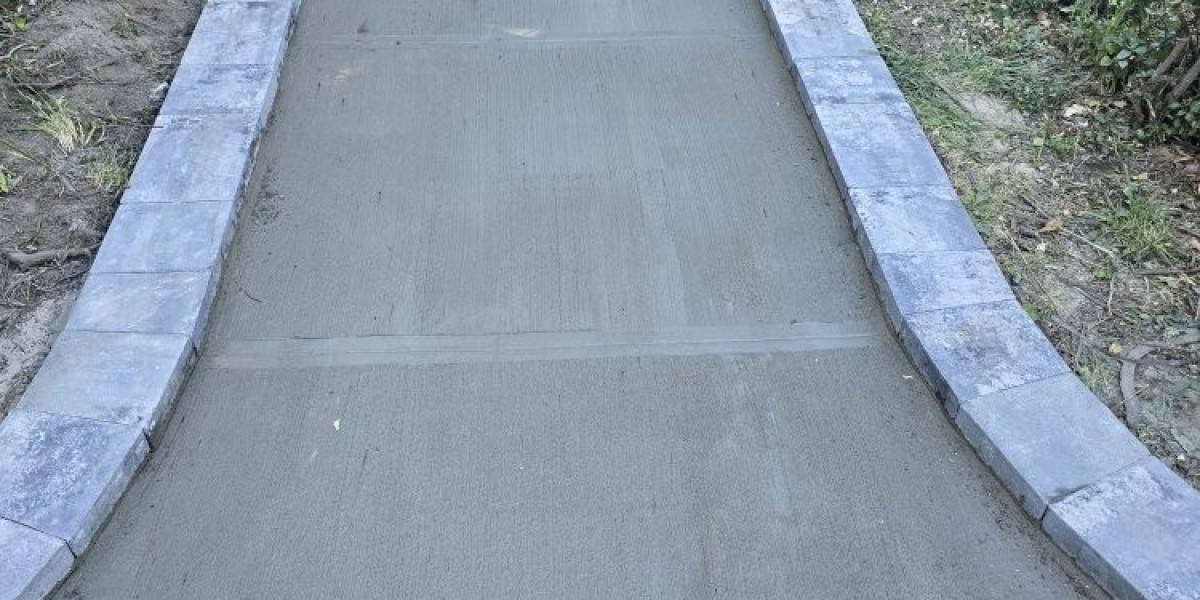Walkway Installation: A Step-by-Step Guide for a Beautiful, Durable Pathway
Installing a walkway is a rewarding project that can transform your outdoor space. Whether you’re enhancing curb appeal, creating a garden path, or ensuring safe access to your front door, a well-built walkway adds both beauty and function to your home. But where do you start? This comprehensive guide walks you through everything you need to know about walkway installation, from planning to completion.
1. Introduction to Walkway Installation
a. What is a Walkway?
A walkway is a defined path that guides movement through outdoor spaces. It’s typically constructed from durable materials like stone, brick, or concrete, and can serve both functional and aesthetic purposes.
b. Benefits of Walkway Installation
Installing a walkway adds value to your home by improving curb appeal, creating safer walking routes, and enhancing the overall design of your garden or yard. It offers a clear, sturdy path for foot traffic, reducing wear on your lawn and landscaping.
2. Choosing the Right Materials
a. Pavers, Stones, and Bricks
Pavers are a popular choice for walkways because of their durability and versatility. Available in various shapes, colors, and textures, pavers can create different looks—from rustic to modern. Natural stone provides a more organic appearance, while bricks lend a classic, timeless feel.
b. Concrete vs. Natural Materials
Concrete is a cost-effective option for walkways. It’s highly durable and can be textured or colored to fit your design. However, natural materials like stone or gravel are more eco-friendly and blend seamlessly into your landscape.
c. Budget Considerations
Choosing the right material depends largely on your budget. While natural stone tends to be pricier, it’s also more durable and visually appealing. Concrete is less expensive, but the cost can add up if you’re looking to customize the appearance with stamping or coloring.
3. Planning Your Walkway
a. Assessing the Space
Before breaking ground, assess the area where your walkway will be installed. Consider factors like the slope of the land, drainage needs, and existing landscaping elements.
b. Measuring and Mapping
Accurate measurements are key to a successful project. Map out the path of the walkway with stakes and string, making sure the layout fits naturally with the surrounding area.
4. Designing the Layout
a. Straight vs. Curved Walkways
Straight walkways are simple and direct, but curved walkways can create a more dynamic, natural look. The choice depends on your landscape and personal preference.
b. Considering Your Landscape
Your walkway should complement the surrounding environment. If your garden features lots of curves and organic shapes, a meandering path will feel more harmonious than a rigid, straight line.
5. Tools and Materials Needed
a. Essential Tools
To install a walkway, you’ll need tools like a shovel, level, measuring tape, and a tamper. For cutting pavers, a masonry saw or chisel will be necessary.
b. Gathering Materials
Gather all materials before you start, including pavers, sand, gravel, and edging material. Having everything on hand will streamline the process and prevent delays.
6. Preparing the Ground
a. Clearing the Area
Begin by removing any grass, rocks, or debris from the area. Make sure to dig deep enough to accommodate the base layers and the thickness of the pavers or stones.
b. Laying the Base
The base layer is crucial for the durability of your walkway. Lay down several inches of gravel and compact it well to create a stable foundation.
7. Laying the Foundation
a. Installing Gravel Layer
A gravel base provides drainage and prevents the ground from shifting under the walkway. Spread the gravel evenly and compact it thoroughly.
b. Compacting the Soil
After laying the gravel, compact the soil underneath to create a solid, level surface. This step is essential for preventing pavers from shifting over time.
8. Placing the Pavers or Stones
a. Choosing Patterns
When laying pavers, you can choose from various patterns such as herringbone, basketweave, or running bond. These patterns not only affect the aesthetic but also the structural integrity of the walkway.
b. Placing with Precision
Lay the pavers or stones carefully, making sure they are level and fit snugly together. Use a rubber mallet to adjust each piece as needed.
9. Cutting Pavers to Fit
a. How to Cut Pavers Safely
Cutting pavers is necessary when you encounter curves or corners in your design. Use a masonry saw or chisel, and always wear protective gear when cutting.
b. Shaping Stones for a Perfect Fit
For natural stone walkways, shaping irregular stones to fit perfectly requires patience and precision. This step ensures a seamless, polished look.
10. Securing the Walkway
a. Filling Joints with Sand
Once all pavers are in place, fill the joints between them with sand. Sweep the sand into the cracks and tamp down the walkway to ensure everything stays in place.
b. Sealing the Surface
Sealing your walkway protects it from the elements and prevents weeds from growing between the pavers. It also enhances the color and texture of the material.
11. Finishing Touches
a. Edging Your Walkway
Edging is essential for keeping your pavers in place and preventing them from spreading over time. Use metal, plastic, or stone edging for a clean, finished look.
b. Adding Decorative Elements
Personalize your walkway with decorative elements like garden lighting, plants, or stepping stones. These finishing touches can elevate the overall design of your outdoor space.
12. Maintenance Tips for Longevity
a. Cleaning and Sealing
Regular cleaning and sealing will help your walkway look new for years to come. Sweep away debris and hose it down periodically, and reseal the surface as needed.
b. Repairing Cracks and Shifts
If you notice cracks or shifting in the pavers, address them right away to prevent further damage. Lift and adjust the pavers as needed and refill the joints with sand.
13. Eco-Friendly Walkway Ideas
a. Permeable Materials
Permeable materials allow water to pass through the surface, reducing runoff and promoting natural drainage. This is a great option for environmentally conscious homeowners.
b. Sustainable Design Practices
Consider using recycled materials or local stone to reduce the environmental impact of your walkway installation. Sustainable design practices can help you create a beautiful, eco-friendly path.
14. Common Mistakes to Avoid
a. Skipping the Base Layer
One of the most common mistakes in walkway installation is skipping the base layer. Without a stable base, your walkway is more likely to shift, crack
b. Poor Drainage Planning
Another common pitfall is neglecting to plan for drainage. Water pooling on or around the walkway can cause erosion and damage the materials.
15. Hiring a Professional vs. DIY
a. Benefits of Hiring a Contractor
While DIY projects can be rewarding, hiring a professional ensures your walkway is installed correctly and efficiently. Contractors have the tools and expertise to handle challenges like uneven terrain and complex designs.
b. How to Choose the Right Contractor
When hiring a contractor, look for someone with experience in walkway installation and a portfolio of completed projects. Ask for references and make sure they are licensed and insured.
Conclusion
A beautifully installed walkway is more than just a functional path—it’s a reflection of your home’s charm, inviting family and friends to feel welcome every time they visit. By carefully choosing the right materials and ensuring proper installation, you create a space that not only adds value but also enhances the warmth and character of your outdoor area. Whether you take on this project yourself or trust the expertise of professionals like SK Group NYC Corp, a well-crafted walkway will bring joy and beauty to your home for years to come.
FAQs
1. How long does it take to install a walkway?
The timeline depends on the size and complexity of the project. A simple walkway can be completed in a weekend, while larger, more intricate designs may take several days.
2. What is the best material for a durable walkway?
Pavers and natural stone are both excellent choices for durability. Concrete is also a good option, especially if it’s reinforced and properly sealed.
3. Can I install a walkway myself?
Yes, with the right tools and preparation, you can install a walkway yourself. However, for more complex designs or challenging terrain, hiring a professional may be the better choice.
4. How do I maintain my walkway?
Regularly sweep and hose down your walkway to keep it clean. Reseal the surface as needed and repair any cracks or shifting pavers immediately to prevent further damage.
5. What should I avoid when installing a walkway?
Avoid skipping the base layer or neglecting drainage. Both are critical to the long-term success of your walkway.



